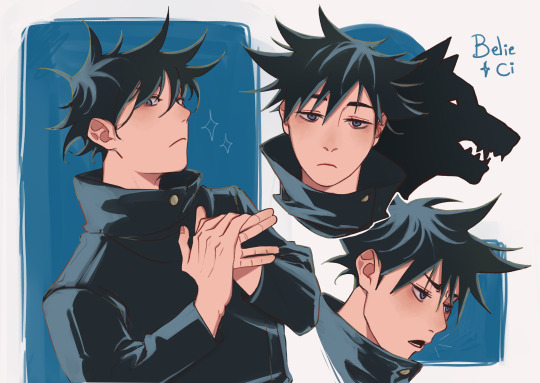i-it's not like i care about anime or anything. (main blog here)
Don't wanna be here? Send us removal request.
Text

birdie wing was so unhinged it made unni forget that it already had a s2 and we watched it together.....
0 notes
Text

114 notes
·
View notes
Text

was having a minor crisis but this appeared in my head and it was so stupid it just snapped me right out of it
40K notes
·
View notes
Text
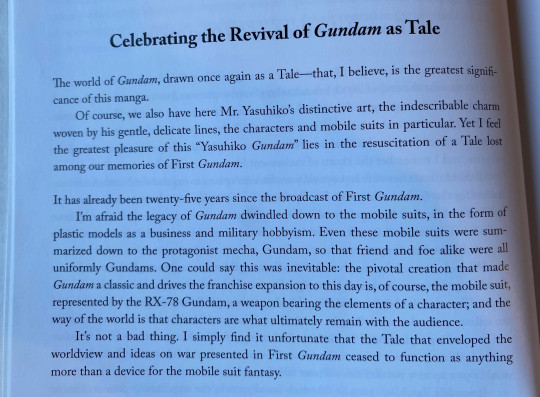
"a weapon bearing the elements of a character"!
(anno, in gundam the origin; more @ source)
for all that i'm "character is real and a thing you should take seriously alongside lore and plot" i hadn't cast my net wide enough.
4 notes
·
View notes
Text



My recent realization thanks to the orb manga (I don’t watch sports)
1K notes
·
View notes
Text
I think it’s so funny that utena has literally no idea why anyone in the black rose arc got turned into a duelist. Like imagine someone pulls up in an intricate uniform holding one of your friend’s swords and says “HAHHAHA I GET IT NOW ALL OF MY DEEP PSYCHOLOGICAL PROBLEMS STEMMING FROM MY HIGHLY SPECIFIC INSECURITIES CAN BE SOLVED IF I KILL YOUR GIRLFRIEND!!!” and it’s sarah from math class who you only vaguely know
5K notes
·
View notes
Text
"perfect blue" (1998)
on rewatch, this was both better and worse than i remembered.
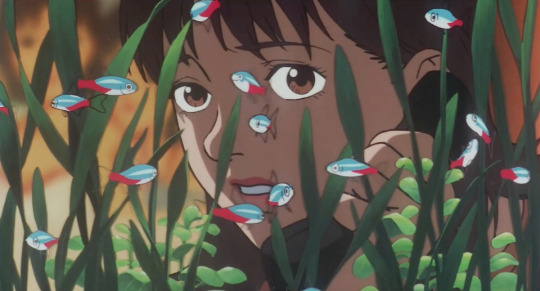
- no one does a transition/jump cut/juxtaposition, at least not in anime, like satoshi kon esp. in the opening minutes of this film, which transposes scenes from cham!'s last concert as a trio with mima's ordinary life post-idol. the juxtapositions are unexpected and not obvious, the beginning of the movie's long disorientation. and of course the unforgettable dream/delusion hybrids as mima begins to experience her life as an unending series of second and third takes. that the movie makes no attempt to validate your theories as to which scenes are dream, montage, and/or reality (at least, reality for the world of the characters) is what makes this film obviously pre-mcu. these days i'm sure there are 4 hour long youtube essays trying to tell you the "true" "perfect blue" timeline -- if they exist, don't watch them.
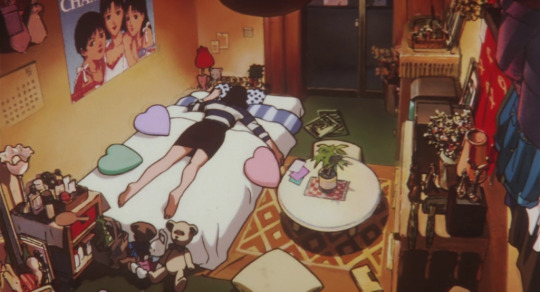
- a musing on the nature of animation/anime films: animation has improved (obviously) since 1997, but even with rotoscoping, digital technology, and animators who have spent all of their adolescent and adult life producing painstakingly detailed and well-articulated 30-second shorts on twitter tagged with "indie anime", it's still difficult (if not impossible) for animated faces to duplicate the microexpressions of a human face on screen. (if it were possible, chainsaw man (2022) would have done it.) you can fake it for a few seconds, with widening of eyes or a twitch of the mouth, and there are moments in "perfect blue" where we linger on a character's expression. but for the most part, the work of microexpressions is done through some small physical detail: the overpowering overhead lights of a set, rumi's cigarette ash falling, the lines on a tv screen as a tape is rewound, the particular way morning light might fall on your bed at certain times of the day.
i think a lot about how anime fakes us out and makes us want to say the word "cinematography" when there is no such thing. there is no camera in an anime film. no shot can ever be an accident; it is always fully formed by human hands (even more true of a film made in the 90s). in the first ten minutes of the film, you see mima walk to the outside corridors of her apartment building, open her door, clean out her refrigerator, run a bath, then flop on her bed. the "camera" wanders in 3-second still shots around her room, establishing shot after establishing shot. there is so much stuff, and it is all hand-drawn: perfume bottles, stuffed animals, lotions, stacks of cds, dried flower bouquets, rows of spices on the range, the rust stains from the stopper chain of her sink. i'm not saying a film director wouldn't have done the same, but these shots feel exceptionally "anime," of trying to work around the limitations of the animated cel. when you cannot ever capture motion by accident, when every gesture "on camera" requires what to a non-artist would be a herculean act of labor, when two characters cannot surprise you into having chemistry with their body language or energy, then everything becomes a matter of framing.
the benefit of animation, though, is that you can easily traverse between illusion and reality. because the camera is not real, because you already are suspending your disbelief, no extra work is required for you to see illusion!mima as a real person. these days i complain frequently about live action adaptations of manga/anime that don't add to the story with its medium. though i've never read the novel on which it is based, "perfect blue" feels like one of those perfect moments when anime is in fact the best medium for adaptation. in anime, everything that is real is already unreal; so, too, is "perfect blue."
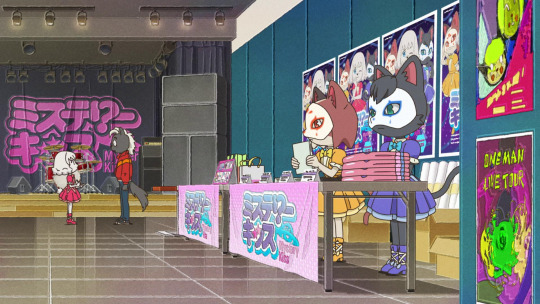
- in the early 2000s, if you liked "perfect blue," people would probably recommend "serial experiments lain" (which is actually what i watched pretty much right after "perfect blue," and i was too young for them both), "ergo proxy," or even the other satoshi kon films. but in 2024 i would say, you should watch "odd taxi." it has everything: the mindfuckery, the b-list pop idols, the murder, the musings on life and the cruelties of internet life, the fantastic soundtrack. "odd taxi" is coen brothers to "perfect blue"'s david lynch. did lynch watch "perfect blue" before making "mulholland drive"? the question now haunts me.
6 notes
·
View notes
Text
looking back over the years (maison ikkoku ep. 27)
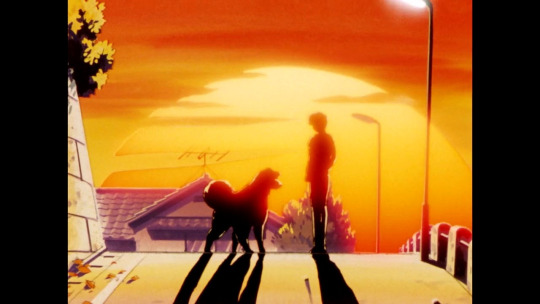
Well as one does throughout their lives, or at least as I often find myself doing, I am on yet another rewatch of Maison Ikkoku. I tweeted briefly about being struck by the animation in episode 8, which I had never noticed until this round. This time I'm also impressed by the amount of diegetic music in this series that I never really processed: music on the streets, pop songs in restaurants and cafes, even a sad Japanese folk rock song when Mr. Ichinose reveals over dinner that he's been laid off.
I've always loved the last few minutes of episode 27 and have mentioned it before, so it's no surprise that this time around I still love it, but it's always worth a few more laudatory words. The episode as a whole is unremarkable: Soichirou goes missing after Kentarou takes him out on a walk and he runs off after a stranger with yakitori. Kyoko at first is unconcerned about his absence, telling Kentarou that Soichirou will return when he returns, but she begins to mull on the dog's presence in her life, in turn revealing her memories of both the human Soichirou while alive and her grief in the days right after his death. Finally, she goes out to look for him, not realizing that Godai has already put in a Herculean effort to find the dog. Lost in thought, she walks the hill back to Ikkoku-kan, only to come across Godai and Soichirou walking home.
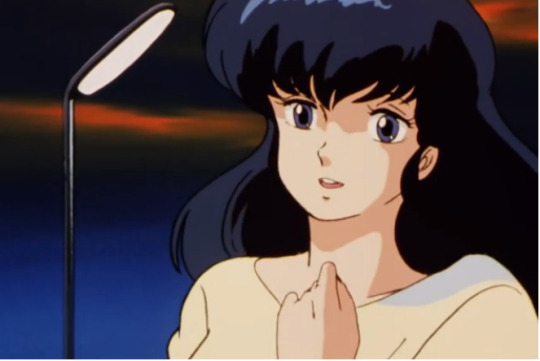
There's a maturity and patience to the final moments of this anime that you rarely see anymore. The pacing is glacially slow, with Kyoko's thought processes happening in 1:1 real time. When she first sees the silhouette of a man walking a dog, she breaks out into a delighted smile and calls out, "Soichirou-san!" The man turns around, the music swells, and you see a close-up of Kyoko's face. She is stunned, but by what, we're not sure. Does she see her dead husband, or does she realize at that moment that it can't possibly be him?
The music fades. The wind blows. In an agonizing half minute of silence, the train passes, and the streetlamps flicker into life behind her, one by one. When the streetlamp right above her lights up, we cut away to a shot of her face. She says her husband's name one last time, this time desperately, as if trying to grab a hold of a dog that has, unleashed, run away from her. She tries to say it a third time, but the name dies on her lips. She knows her husband is dead, and yet, can it be? It is like you are reliving her grief over the death of her husband with her.


Then: the streetlamp above the silhouetted figure lights up. It is, of course, Godai. We knew that, she knew that. Yet the light had to travel from behind her to above him, from the past to an unspoken future, before she can accept it. She calls Godai's name tentatively. He, bathed in sunlight and artificial light both, smiles down at Soichirou-san, sends him back to his rightful owner. In a moment of soundtrack genius, Gilbert O'Sullivan's "Alone Again, Naturally" begins to play (but only in those regions that had the license to include it). When we next see Kyoko close-up, the moment is broken. She is present, in the present. She is smiling again, and Soichirou licks her face.
At 15 it seemed to me obvious that Godai should get Kyoko at the end, because he was the main character. At 20 I thought Godai was a fool to chase after a woman while being destitute in college. At 25 I thought about the hard choices Kyoko made to give up a life of security with Mitaka for a life of little space and even littler pleasures with Godai. But at over 30 I see this story for what it is now, a love story through and through. Mitaka never had a chance. Kyoko's heart had made its choice long ago; the seven years we spend with these characters is for her to make peace with that decision, to learn to listen to herself, to give herself space to grieve and hold space for Soichirou's death while also making room for Godai, like the long two minutes at the end of episode 27 which end with Godai returning Soichirou, metaphorically and actually, to her.

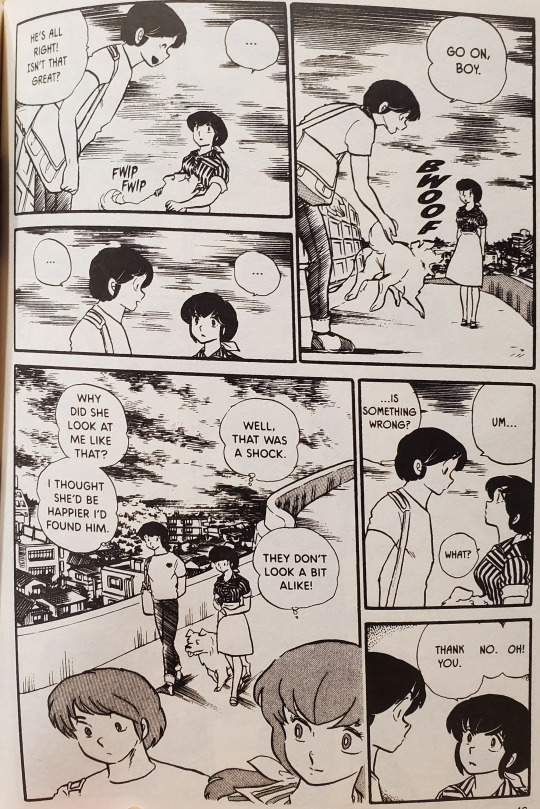
Some might call these scenes filler or saving animation budget. I think this is one of those rare moments where the anime truly internalizes the source material and gives us something unique to its own medium. Takahashi's original often makes Godai a butt-monkey even in his most dramatic moments. It is, at heart, a comedy as much as it is a poignant romance. The anime on the other hand takes an almost cinematic approach to "filming" the characters, who are often given moments to breathe and emote with just their faces as if this were a real movie. Nothing more is said in this moment in the anime, besides Godai and Soichirou's names. Nothing more needs to be said. The anime trusts the viewer to put the pieces together and link the parallel images of Godai and Soichirou to Kyoko's mental state. This episode comes after Kyoko admits at Soichirou's graveside that she isn't ready to move on and Mitaka/Godai both propose and ask and are asked to wait for her response. What a perfect moment to draw it all together. It isn't that Kyoko mistakes Godai for her late husband. She sees them both and knows who, and what, they are. It is that she needs time and our patience to cross that distance and walk under the same streetlamp as Godai. And in this episode, as he does throughout the series, Godai gives it to her.
41 notes
·
View notes
Text
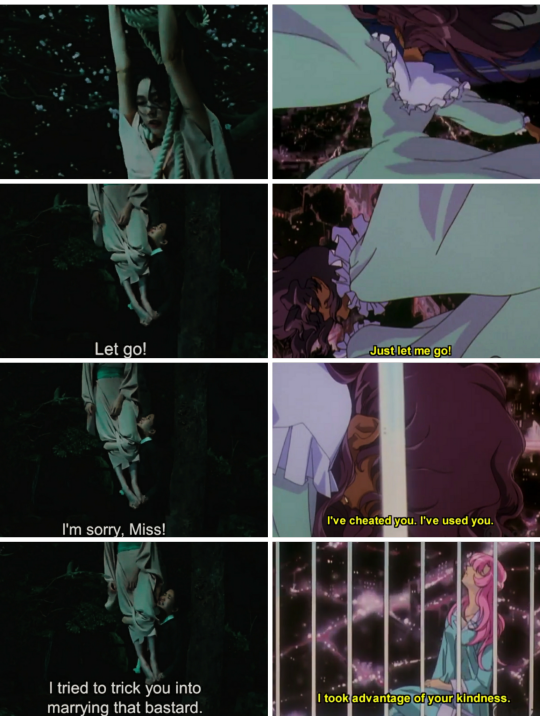
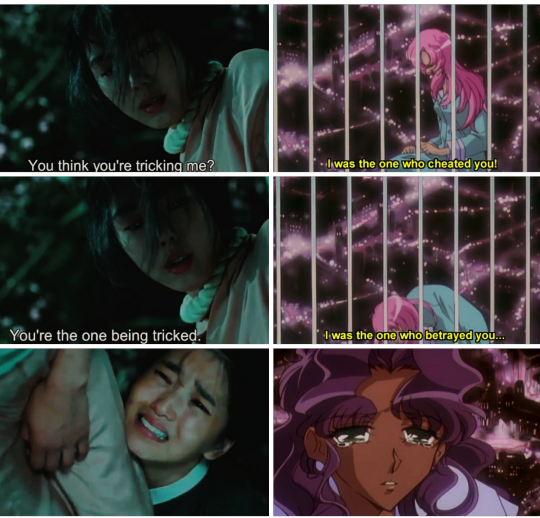
The Handmaiden (2016) / Revolutionary Girl Utena (1997)
2K notes
·
View notes
Photo

Maison Ikkoku article in the 5/1986 issue of Newtype. When this article was printed Maison Ikkoku had only been on the air for little over a month.
98 notes
·
View notes
Text




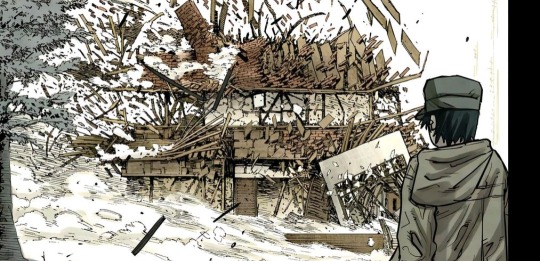

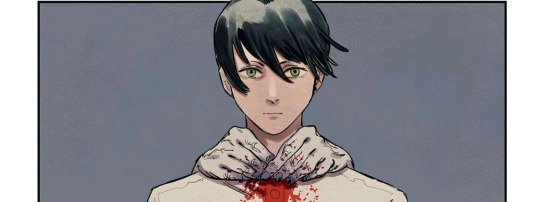


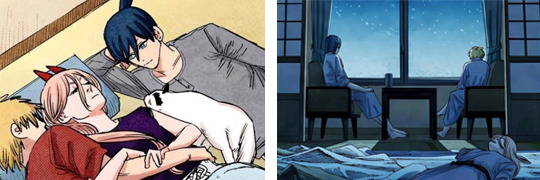


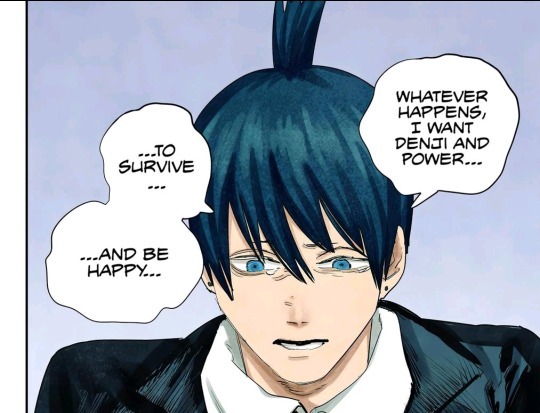



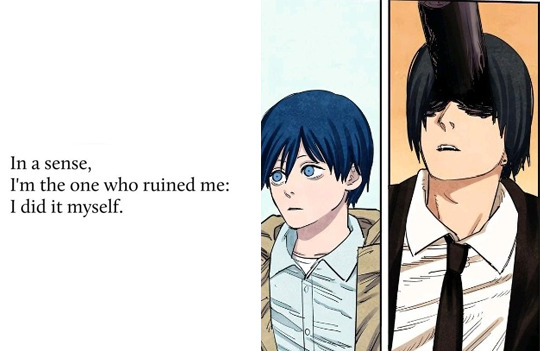



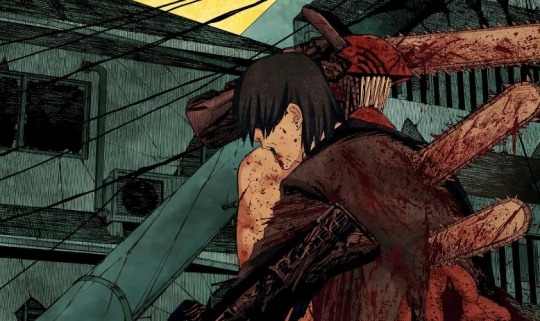
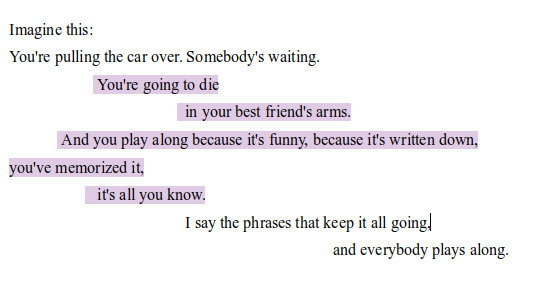



The Tragedy of Hayakawa Aki - chainsaw man, tatsuki fujimoto
grief lessons: four plays by euripides, anne carson // chainsaw man, tatsuki fujimoto // deathless, catherynne m. valente // “untitled,” 2016, ink on paper, kara walker // james, clementine von radics // slide tackle, japanese breakfast // how to cure a ghost, fariha róisín // red glove, holly black // the letter, richard paul evans // interview with james hall, richard siken // ptolemaea, ethel cain // iq84, haruki murakami // the godfather, mario puzo // god's silence, franz wright // crush, richard siken // tumblr user ojibwe // when i was done dying, dan deacon
5K notes
·
View notes
Photo
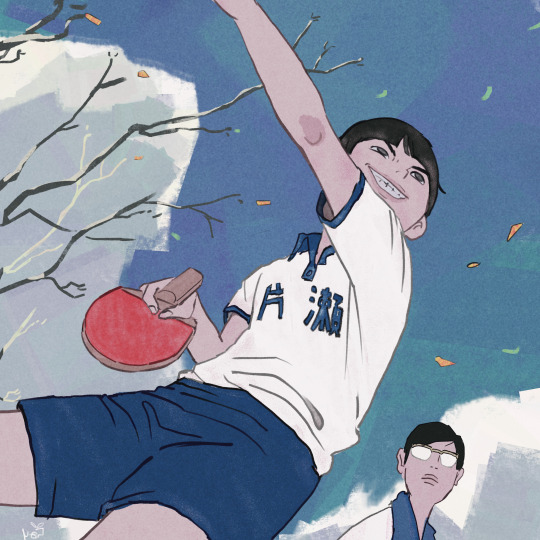

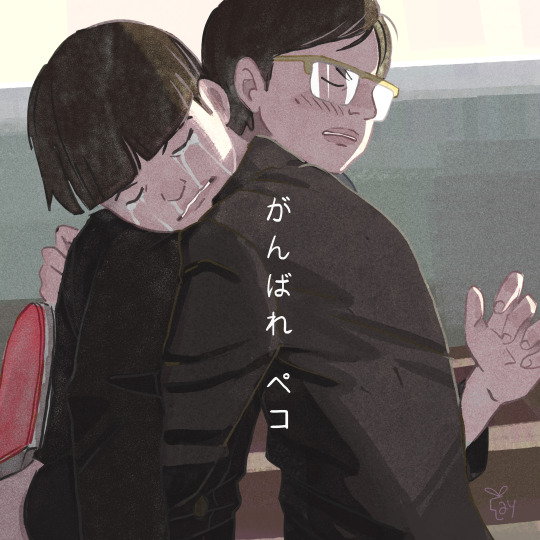
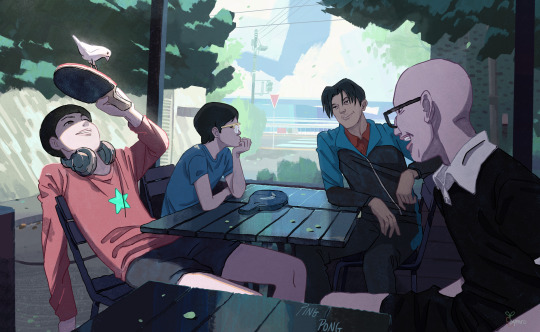
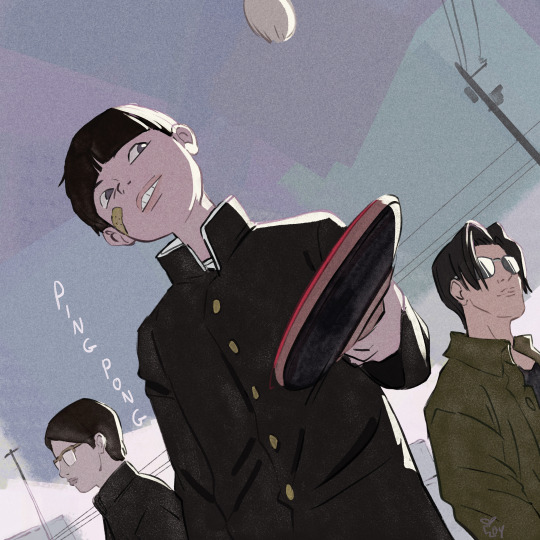
Ping Pong Fanart.
2K notes
·
View notes




